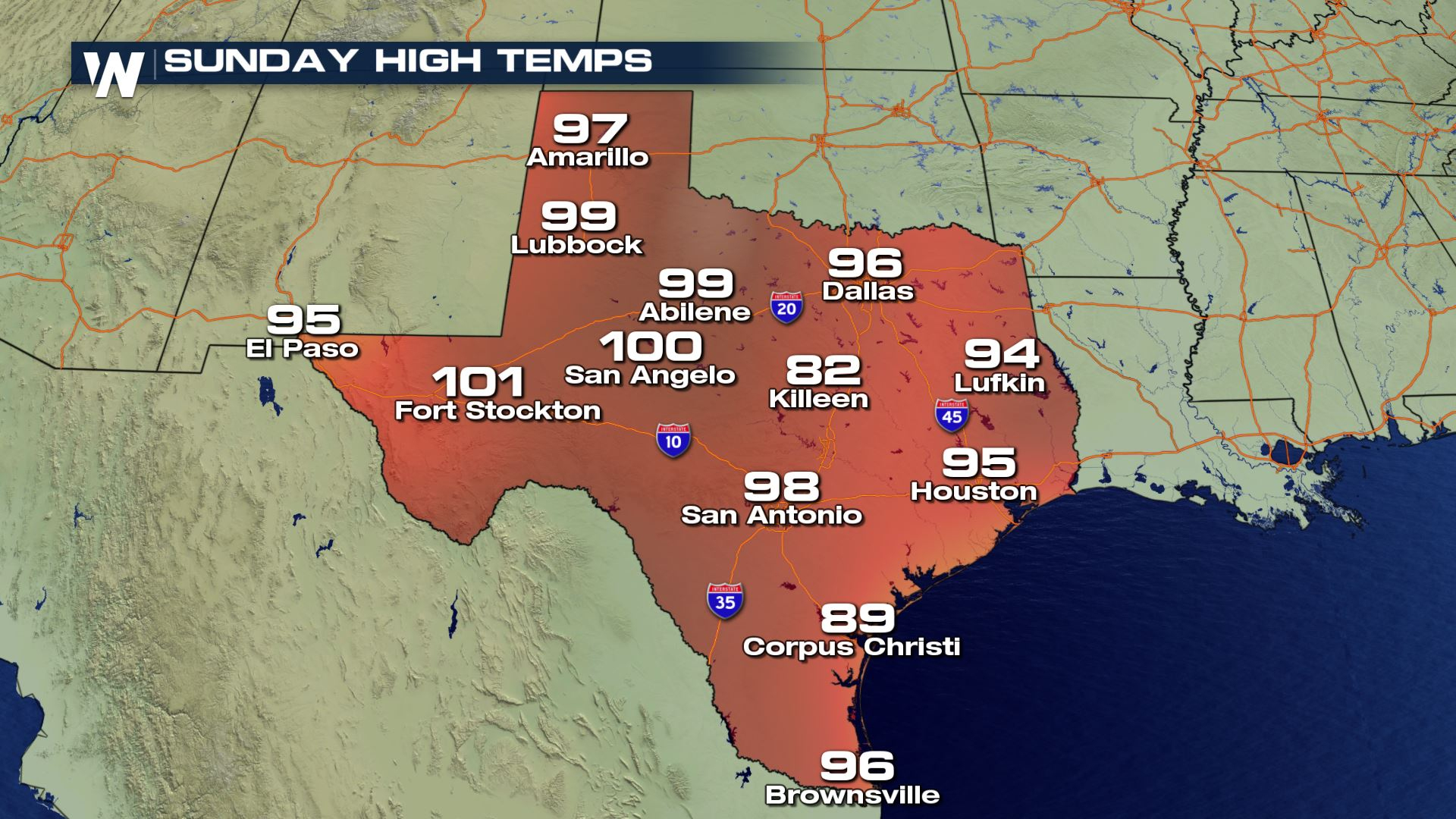Climate Change and Texas Weather

Texas weather – Climate change poses significant challenges to Texas’s weather patterns, bringing rising temperatures, altered precipitation, and intensified extreme weather events. The state is taking proactive measures to mitigate and adapt to these changes.
Rising Temperatures
Texas has experienced a steady increase in average temperatures over the past century. This warming trend is expected to continue, with projections indicating a rise of 2-4 degrees Fahrenheit by mid-century. Higher temperatures can lead to increased heat waves, which can pose health risks and strain energy infrastructure.
Changing Precipitation Patterns
Climate change is also affecting precipitation patterns in Texas. While the state is generally prone to droughts, heavy rainfall events are becoming more frequent and intense. This variability can lead to both water shortages and flooding, impacting agriculture, water resources, and infrastructure.
Increased Extreme Weather Events
Extreme weather events, such as hurricanes, tornadoes, and wildfires, are becoming more common and severe due to climate change. These events can cause widespread damage, loss of life, and economic disruption. Texas is particularly vulnerable to hurricanes, which can bring high winds, storm surge, and flooding.
Mitigation and Adaptation Measures
The state of Texas is taking steps to mitigate climate change and adapt to its effects. These measures include:
- Investing in renewable energy sources
- Improving energy efficiency
- Reducing greenhouse gas emissions
- Developing drought-tolerant crops
- Strengthening infrastructure to withstand extreme weather events
Specific Examples of Climate Change Impacts
Climate change has already had tangible effects on Texas weather:
- The state has experienced record-breaking heat waves in recent years, including the 2011 heat wave that caused widespread power outages and heat-related illnesses.
- Heavy rainfall events have become more frequent, leading to flooding in major cities like Houston and Dallas.
- Hurricanes have become more intense, with Hurricane Harvey in 2017 causing catastrophic flooding in southeastern Texas.
These impacts highlight the urgency of addressing climate change and implementing effective mitigation and adaptation strategies to protect Texas’s weather and the well-being of its residents.
Economic Impact of Texas Weather

Texas weather has a significant impact on the state’s economy. Extreme weather events, such as hurricanes, tornadoes, and floods, can cause billions of dollars in damage to infrastructure, homes, and businesses. These events can also disrupt transportation and supply chains, leading to lost productivity and revenue.
Agriculture
Texas is a major agricultural state, and weather conditions can have a significant impact on crop yields and livestock production. Droughts, floods, and hail can damage crops and reduce yields, leading to financial losses for farmers and ranchers. Extreme heat can also stress livestock, leading to reduced weight gain and milk production.
Tourism
Texas is a popular tourist destination, and weather conditions can affect the number of visitors to the state. Extreme heat or cold can discourage tourists from visiting, while hurricanes and other storms can disrupt travel plans and damage tourist attractions.
Energy
Texas is a major energy producer, and weather conditions can affect the production and distribution of energy. Hurricanes and other storms can damage oil and gas infrastructure, leading to disruptions in production and supply. Extreme heat can also increase demand for electricity, putting a strain on the power grid.
Mitigation Costs, Texas weather
The economic impact of Texas weather can be mitigated by investing in disaster preparedness and resilience measures. These measures can include building levees and seawalls to protect against flooding, strengthening infrastructure to withstand hurricanes and tornadoes, and developing early warning systems to give people time to evacuate before storms hit.
Economic Benefits
In addition to the costs associated with weather-related disasters, Texas weather can also provide some economic benefits. The state’s abundant sunshine makes it a good location for solar and wind energy production. These renewable energy sources can help to reduce the state’s reliance on fossil fuels and create new jobs in the clean energy sector.
The relentless sun of Texas bakes the earth, casting an oppressive heat that permeates the air. Even the nights offer little respite, the humidity clinging like a suffocating blanket. But beneath the deceptively calm surface of the Gulf waters, a hidden danger lurks.
Shark bites are a rare occurrence, but they serve as a chilling reminder of the untamed wilderness that lies just beyond the shore. Yet, the relentless heat of Texas weather persists, a constant reminder of the unforgiving nature of this unforgiving land.
The unforgiving Texas weather has left an indelible mark on the state’s infrastructure, leading to a catastrophic texas power outage that plunged millions into darkness and cold. However, the resilience of Texans shone through as they weathered the storm and worked tirelessly to restore power.
Now, as the sun rises on a new day, the focus returns to the unpredictable nature of Texas weather, a constant reminder of the importance of preparedness.